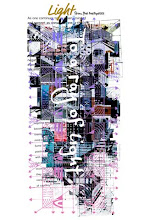Zeus, the main god of Greek mythology and the omniscient and omnipotent god, also holds a Vajra in his hand. As a god of the sky, Zeus ruled the entire universe and the weather such as clouds, rain, snow, and thunder. Zeus is called Jupiter in Roman mythology.
Two eagles can be seen in another statue of Zeus, and there is also an eagle next to Jupiter in the image above.
The lightning tool is called Vajra or Vajra, and in Indian mythology it is the weapon of Indra. The Indian scripture Bhagavad Gita states that " I (Purusha, Brahman) is the Vajra (Vajra) of the weapons. " Neither Purusha nor Brahman were symbols of Emptiness.
Buddhist Nio also has a Vajra. A pair of an A-un statue with a mouth and an Un-gyo statue with a mouth connected stands on the front gate of a temple. Aun is the same as the guardian dog of the shrine and is It is generally known as Nioh. In esoteric Buddhism, it is the beginning of all the two characters of Aun, and it. "A" is the first letter of the Sanskrit alphabet and " huum " is the last letter. In other words, it represents the beginning and the end. The one that expresses it in Chinese characters is Aun. In other words, a word that expresses Emptiness.
Vajradhara also has a Vajradhara and is called Vajrapani in India. This is the same as Nio. However, Nio is a naked figure of two people, but Vajradhara is a military commander. It originates from the Greek hero Heracles. Hercules is "a bearded" man wearing lion fur and holding a club in his hand. " At the statue of Hercules in the Capitoline Museums in Rome, he holds two snakes in his hands.
In other words, the two snakes represent Emptiness but Hercules, and the club in his hand is a differently designed Kongosho. The club is also a symbol and can be seen in the Indian scripture Bhagavad Gita. Arjuna told St. Bhagavad (I, Purusha) , Brahman, = Emptiness) that he wanted to see you. And Arjuna said to St. Bagavad who showed up. "God, I see the gods in your body .... I see you with a crown, a club, a disk , and a mass of brilliance that shines in all directions. "
The Buddhist Kongo Yasha Myoou also has a Kongo sword, and also has a snake.
Fudo Myoo, who is the center of the five great Myo Kings with the Buddhist Kongoya Shamyoo, also has a string-shaped Kongosho. In addition, the part of the sword is a sword. Fudo Myoo is also said to be the incarnation of Dainichi Nyorai.
The other five great Myo Kings, Gozanzemyoou, Gundarimyoou, and Daiitokumyoou also have Kongosho, and the snake is on their bodies. It may be wrapped around. In other words, the Five Great Myo Kings are also represented by a common symbol of Emptiness.
The five great Buddhist kings, Yamantaka, are Amida Nyorai and Monju Bosatsu. The famous Amida Nyorai is the Great Buddha of Kamakura. The Great Buddha of Nara is called Birushanabutsu, and in esoteric Buddhism it is the same as Dainichi Yorai, and its incarnation In other words, both Kamakura and Nara represent Emptiness. The Great Buddha of Nara is a space Buddha that transcends Gautama Siddhartha and is said to be a Buddha that illuminates the truth of the universe to all and leads to enlightenment.
In this way, Mesopotamian Akkado mythology, Greek mythology, Roman mythology, Indian mythology, Hinduism, Buddhism, and esoteric Buddhism are connected by symbols, and the gods and symbols all represent Emptiness.




























0 コメント